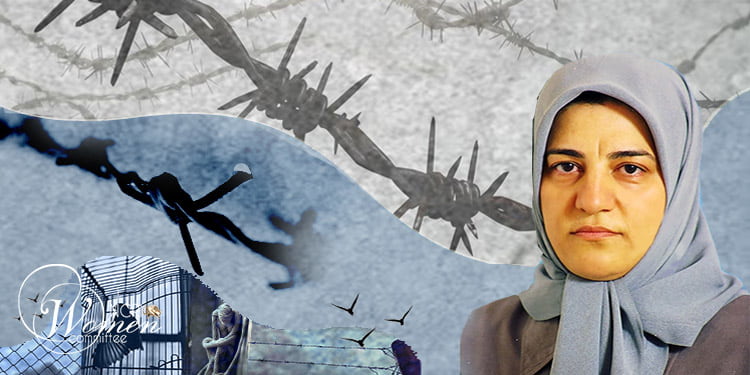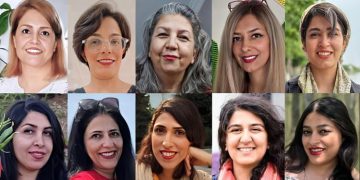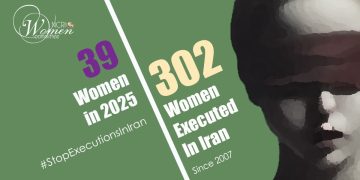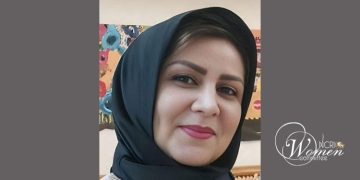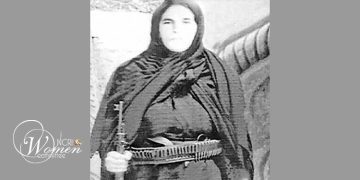From the memoir by Hengameh Haj Hassan – Part 20
In the previous chapter of the Face to Face with the Beast, Hengameh described the Residential Unit and how its staged betrayals produced psychological breakdowns among prisoners. Here she returns to the general ward after quarantine and recounts the fragile relief, the ruined families, and the long shadow of prison-made trauma.
⚠️ Content warning: contains descriptions of psychological torture, detention, grief, and their mental/emotional effects.
Return to the General Ward
After roughly two months in quarantine, in late summer 1984 they finally put me back in Ward 7 as part of a group of ten. I don’t remember what time of day it was. I was eager to get inside and see my cellmates.
We went in and the others rushed up to meet us — though there were fewer of them. They hugged us and told us that many of the girls had been taken as punishment to Ward 8 and several more had been moved to other wards.
Zahra, one of the girls, came up holding me and crying. “Why are you crying?” I asked. She answered, “Why are you like this?” I looked into a mirror and saw how pale I had become after nine months without sunlight. I’d lost weight, and the tuft of hair at the front had turned white — I don’t know when that happened. The others joked I looked like Indira Gandhi.
Still, we greeted one another, kissed, joked, and tried to be glad for whoever was there. One of the prisoners from Sari said the agents and their gang kept coming around, saying, “Soon you’ll see your resisting friends in interviews,” and spreading rumors that you had broken. They kept trying to undermine you, but we knew you wouldn’t break, and you wouldn’t betray one another.
The turncoats and spies no longer swaggered; they had sunk low. That was because the contradictions and fractures inside the prison administration — fed by the statements of clerics like Ansari — had made them vulnerable. For the moment no one supported them; the regime was putting the blame on them for the mess, and they were left exposed.
The turncoats had a deeper fear than the guards: they feared the prisoners themselves, because they knew how many lives had been destroyed by their betrayals. Even the interrogators and executioners lived in terror. Haj Davood and Lajevardi barely left the prison; Haj Davood had even brought his wife and children to live there. The interrogators wouldn’t even face prisoners awaiting execution without masks. When those men lived in fear, imagine how the turncoats felt.
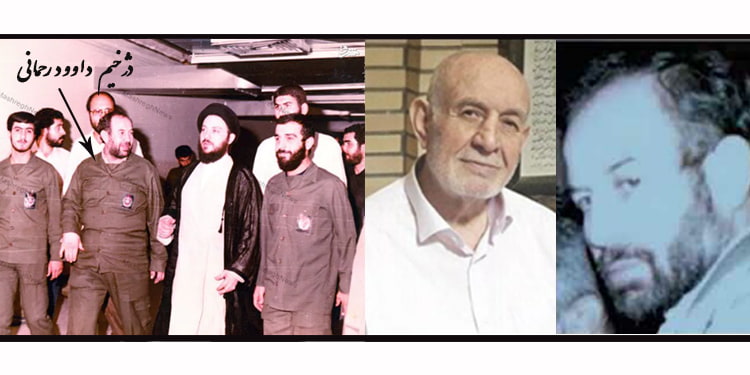
In Ward 7 my eyes landed on Mother Masoumeh — I wasn’t mistaken; it was Masoumeh Ilkhani herself. She had become much thinner, and her face looked utterly worn and shattered. I went to her and hugged her, and my hand reached instinctively for the braid at the back of her head — there was nothing there but a short, thin plait. “Where’s your hair?” I asked. She looked at me kindly and said, “Never mind. What use is hair when our best are gone?” She looked deeply sad. We didn’t have time to talk more. Night came, and we kept talking with the girls while the security agents watched and monitored us.
While I sat talking with Jamileh, Tavous — that filthy creature who had helped send girls to the “cages,” the “coffins,” and the Residential Unit — came brazenly and sat beside us. “Hello, Hengameh! How are you?” she said. I knew the agents had sent her to spy. I snapped: “Rot in hell, you bastard! Who told you to come speak to me, you piece of scum? Get lost!” She scurried away like a mouse. Jamileh said, “Hengameh, why did you say that? Tomorrow, they’ll send you to Ward 8.” I answered, “I pray to God they do — Shekar is there.” To be honest, I’d stopped counting consequences; I didn’t care anymore. What worse could they do than what they’d already done?
The next day I went to the yard to see Mother Masoumeh and we talked. As she showed me the photographs she had received during that time, she showed me a picture of her little son, now grown, and said, “This photo was taken a few days before he died.” I thought I’d misheard. “Before what?” I asked. Calmly she said, “Don’t be upset. So many of our best children were executed by them — Kobra, Fati, Afsaneh, Nahid… My son was one of them. His blood is no less red; in effect, Khomeini killed him.”
She then explained — seemingly to spare me — that her son had fallen from a balcony while playing and died. She quickly changed the subject and showed me another photograph. How patient and dignified she was.
A tall, wheat-skinned girl I had not seen before sat near us on the yard steps and asked, “Are you Hengameh?” I said yes. “Were you a nurse?” she asked; I said yes. “How do you know me?” I asked. She said, “I knew you from your speech and the way you move. Shekar used to tell me a lot about you — you are exactly as she described. I’m Mina.”
I was relieved. “You were with Shekar?” I asked. “When? Where?” She said quietly, “Not now — forget it for a while.” I pressed, and she replied, “Look, my condition isn’t good. They watch me closely. For your own sake, don’t talk with me much.” I said, “All right, please — tell me about Shekar.”
Mother Masoumeh cut in sharply and scolded me: “Don’t you understand? You mustn’t be talking! Better to listen!” I had to stop. Mina was the only person I saw from the Residential Unit who seemed at least somewhat steady — not broken — but she was silent and cautious.
That was the last time I saw Mother Masoumeh in that ward. Later I heard she had gone mentally ill in prison. At her final visit she was told the news that her elder son had died. What a cruel fate: her nephew had taken the boy hiking and he fell and died. Both her children were taken from her, one after the other. After hearing about the second son, she fell into silence and never spoke again; with severe depression and total psychological collapse, she was kept in prison for two more years. When the authorities were finally certain she would never return to normal life, they released her. Mother Masoumeh never went to trial and never received a sentence — she had no crime, nothing the regime’s own laws could properly label — so she was never sent to court. Under captivity she finally went insane, and only then did they release her. A woman whom the Shah’s prisons could not bend was held for four years without charge under Khomeini, and when they could not fabricate a sentence, they destroyed her mind.
Truly, Khomeini’s prisons are like no other. Perhaps only the Nazi death camps are comparable — but in those camps people were killed outright. In Khomeini’s prisons, if someone survived the “cage,” the “coffin,” the Residential Unit — horrors without parallel — and did not lose their mind, they were often later executed in the 1988 massacre after years of torture by the regime’s killers. Only someone who has lived inside those walls can understand. Words in no dictionary can adequately describe it.
To be continued…
Contextual notes
- “Agents and their gang” / the “Gestapo”: the prisoners’ term for prison security agents and their collaborators — officers and local informants who ran surveillance, arrests, and interrogations.
- Turncoats / Tavvab: prisoners who, under torture or pressure, “repented” and collaborated with interrogators; they often served as informers or intermediaries inside the prison.
- Ward 7 / Ward 8: specific sections/wards inside Evin / Ghezel Hesar used for general population (Ward 7) or for punitive isolation and harsher treatment (Ward 8).
- Residential Unit: a section used for intensive psychological torture and staged coercion — a place where prisoners were forced into false confessions and turned into tools against their fellow inmates.
- “Cages” and “coffins”: small, coffin-like punishment cells where prisoners were forced to sit blindfolded between wooden planks for prolonged periods — part of the system to force “repentance.”
- 1988 massacre: the large-scale executions of political prisoners in Iran in 1988; many prisoners mentioned in these memoirs were later killed in that wave.
- Shekar / Shekar Mohammadzadeh: Hengameh’s close friend and fellow nurse who appears repeatedly in the memoirs (Shekar was imprisoned and a symbol of resistance).



